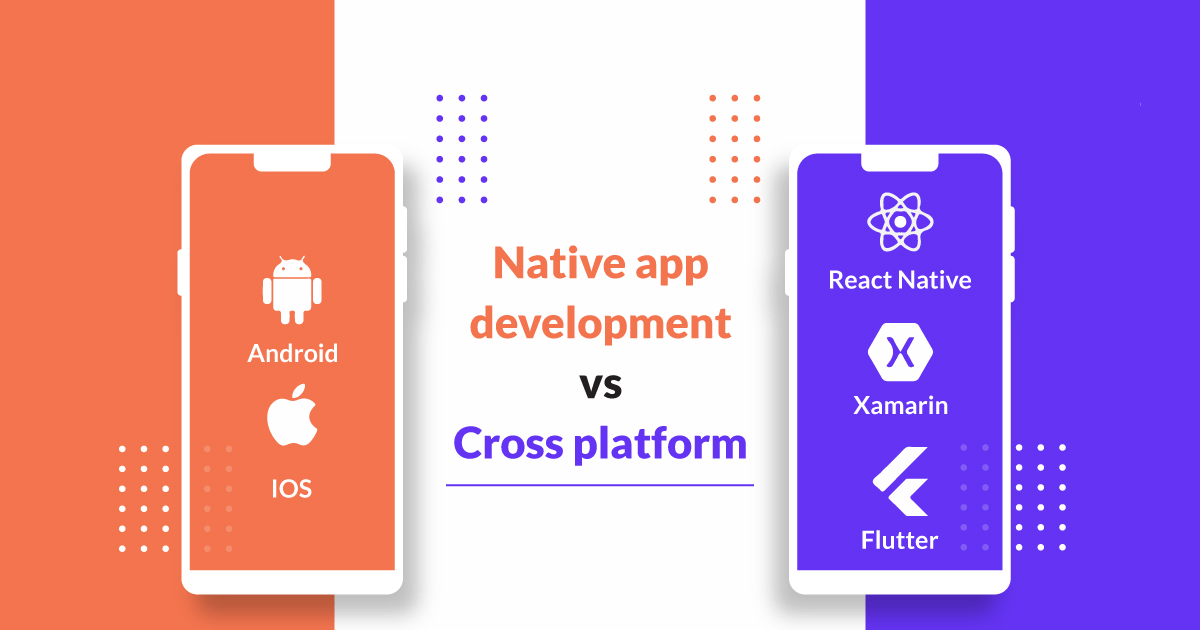In today’s mobile-first world, businesses can’t afford to ignore the power of mobile apps. Whether you’re a startup building your first product or an enterprise expanding your digital presence, one of the biggest decisions you’ll face is choosing between native and cross-platform app development. Both approaches come with unique advantages and trade-offs. Let’s break it down so you can make the right decision for your business.
What Are Native Apps?
Native apps are built specifically for one platform—Android (Java/Kotlin) or iOS (Swift/Objective-C). They use the platform’s core programming languages and frameworks, giving developers full access to device features like camera, GPS, sensors, and push notifications.
Advantages of Native Apps:
- Performance: Fast, smooth, and highly responsive since they are optimized for the platform.
- User Experience (UX): Seamless design and interaction aligned with platform guidelines.
- Device Integration: Better access to hardware features.
- Scalability: Ideal for complex applications that need advanced features.
Challenges of Native Apps:
- Cost: Separate codebases mean higher development and maintenance costs.
- Time: Building for both Android and iOS requires more time and resources.
What Are Cross-Platform Apps?
Cross-platform apps use frameworks like Flutter, React Native, or Xamarin to build a single codebase that runs on both iOS and Android.
Advantages of Cross-Platform Apps:
- Cost-Effective: One codebase for multiple platforms reduces development costs.
- Faster Time-to-Market: Write once, deploy everywhere.
- Consistent UI: Uniform look and feel across platforms.
- Easier Maintenance: Updates and bug fixes can be applied to one codebase.
Challenges of Cross-Platform Apps:
- Performance Limitations: May not match native apps for heavy processing, gaming, or AR/VR.
- Limited Access to Advanced Features: Sometimes requires custom native modules.
- UI Differences: Platform-specific look and feel might not always be perfectly replicated.
Native vs. Cross-Platform: A Quick Comparison
| Aspect | Native Apps | Cross-Platform Apps |
|---|---|---|
| Performance | High, optimized for the platform | Moderate to high, but may lag in heavy apps |
| Development Cost | Higher (separate codebases) | Lower (single codebase) |
| Time-to-Market | Slower | Faster |
| User Experience | Excellent, platform-specific | Good, but sometimes less consistent |
| Maintenance | Complex (multiple codebases) | Simple (single codebase) |
| Best For | Complex, high-performance apps | MVPs, startups, budget-conscious apps |
How to Decide What’s Right for Your Business
- Budget & Timeline: If you’re a startup or need quick market entry, cross-platform may be the way to go.
- App Complexity: If your app requires advanced features, 3D graphics, or heavy computations, native apps will deliver better performance.
- Target Audience: If your customers are split between iOS and Android, cross-platform ensures wider reach faster.
- Future Scalability: Businesses planning long-term growth with feature-rich apps often prefer native development.
Final Thoughts
There’s no one-size-fits-all answer to the native vs. cross-platform debate. The right choice depends on your business goals, budget, and the kind of user experience you want to deliver.
If speed and cost efficiency are your priorities, cross-platform app development is a strong contender. But if performance, scalability, and user experience matter most, native apps will give you the edge.
At the end of the day, the key is aligning your app strategy with your business vision.


